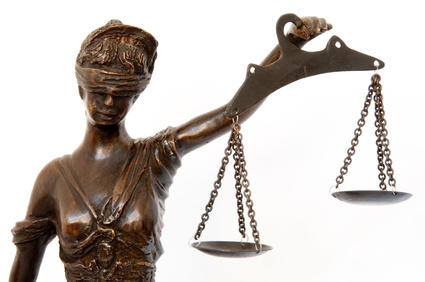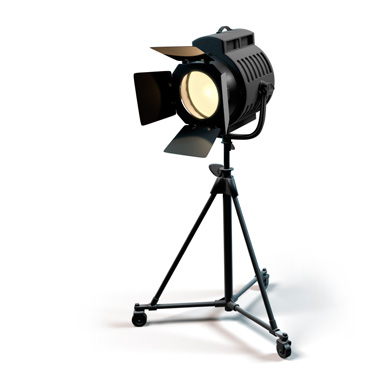
US court denies fair use for AI training of competitor’s (non-generative) product

Specialised Lawyer for Copyright and Media Law View profile
On 11 February 2025, the US District Court in Delaware issued a summary judgment in the case of Thomson Reuters v. Ross Intelligence (No. 1:20-cv-613-SB). Judge Stephanos Bibas ruled that the training of an AI system with copyrighted content does not fall under the fair use doctrine in this case. The decision is significant because it is the first of the approximately 39 AI-related copyright cases currently pending in the US to explicitly address the fair use issue in the context of AI training.
The case of Thomson Reuters vs. Ross Intelligence
The case initially centred on whether the so-called ‘headnotes’ (legal summaries in headnotes), a legal database owned by Thomson Reuters, were protected by copyright. Judge Bibas had cast doubt on this in an initial decision in the case in September 2023, on the basis that the headnotes were based on legal opinions that were not protected by copyright. In a 180-degree turn, Judge Bibas now concludes that even a minimal degree of creativity – “some creative spark” – is sufficient for protection.
In a second part the decision discussed the question whether Ross Intelligence could use these headnotes and the Westlaw’s key number system to train its own AI-based legal research tool. After Thomson Reuters refused to grant a licence, Ross had used a third-party vendor called LegalEase to create approximately 25,000 bulk memos derived from Westlaw headnotes. This data was used to train Ross’s AI search engine, which was designed as a competing product to Westlaw. The unauthorised use would also harm a potential licensing market for the training data.
The court examined the four central factors of the fair use doctrine (‘1: the use’s purpose and character, ‘2: the copyrighted work’s nature’, ‘3: how much of the work was used and how substantial a part it was relative to the copyrighted work’s whole’, ‘4: affect to the copyrighted work’s value or potential market’) and concluded that Ross’ use did not qualify as ‘fair use’. In particular, the commercial nature of the use for a competing offering and the lack of ‘transformativeness’ were decisive, as Ross’ AI system essentially served the same purpose as Thomson Reuters’ product, namely to find and provide existing court decisions.
Non-generative AI – an important distinction
A key aspect of the ruling is Judge Bibas’ explicit emphasis that the decision only applies to non-generative AI. Unlike modern generative AI systems such as ChatGPT, DALL-E or Midjourney, which can learn from training data and (mostly) generate new content, Ross’ system merely reproduced existing court decisions that were relevant to the user’s query.
Judge Bibas wrote in his judgment: “Ross took the headnotes to make it easier to develop a competing legal research tool. So, Ross’s use is not transformative. Because the AI landscape is changing rapidly, I note for readers that only non-generative AI is before me today.”
Why generative AI cases might turn out differently
In the context of generative AI training, the fair use factors might be assessed differently, particularly with respect to the first factor, and here the ‘transformative’ nature of the use. Generative AI systems generate content that may be different from the training data and (potentially) have a wide range of applications. OpenAI and other vendors argue that their systems transform the training data in a way that goes far beyond mere retrieval – they create something new that did not exist in the training data in that form. Furthermore, with generative AI, the original works would not appear directly in the output, and the impact on the potential market might be less direct than with a competing product, as in Ross’s case.
It will depend very much on the market in question. Image generators such as StableDiffusion, which are in direct competition with stock photo agencies such as Getty Images, could well be regarded as competing commercial products. The case of Getty Images vs. Stability AI is also before the District Court in Delaware.
Licensing market for AI training
It is particularly interesting to note that under the fourth factor (“market harm”), which was considered the most important factor, the court recognised that the licensing of data for (legal) AI training was a potential market for Thomson Reuters. However, this argument could potentially be applied to generative AI cases. Operators of generative AI systems are also currently entering into licensing agreements for training data – and not just in the image sector. It may therefore have been a coincidence that a few days after the Thomson vs. Ross decision, Meta announced that it was suspending its AI training licensing programme for publishers for the time being.
Legal situation in Germany: TDM instead of fair use
While the fair use doctrine is at the centre of the legal assessment in the US, German copyright law does not recognise such a concept. Instead, Germany has specific copyright limitation provisions, in particular the so-called “Text and Data Mining (TDM)” limitation in §§ 44b and 60d UrhG.
The German discussion therefore mainly revolves around the question of whether, and to what extent, this TDM restriction permits royalty-free AI training. Particularly in the case of generative AI, rights holders argue that the TDM barrier is not intended for the compilation of training data sets and the training of AI models.
A prominent example is the lawsuits filed by GEMA, which seeks to establish its own royalty-based licensing model for AI training with copyrighted musical works and for the use of song lyrics. In contrast to the US, where the fair use doctrine can be applied flexibly, the German licensing rules are more narrowly defined and may therefore be less easy to extend to new technological developments.
Conclusion and perpective
The judgment in Thomson Reuters vs. Ross Intelligence is an important first step in the legal assessment of AI training with copyrighted works, but it is explicitly limited to non-generative AI systems. It remains to be seen how courts will apply the fair use doctrine in the many pending cases against generative AI providers such as OpenAI, Microsoft, Suno and Udio.
For companies developing or provide AI technologies in Germany and Europe, it is important to note that the legal framework is different from that in the US. The discussion about the applicability of the text and data mining exception to AI training is still ongoing, and the EU AI Act explicitly defines compliance with European copyright law.
A preliminary conclusion can be drawn: While the Delaware ruling sends a strong signal against the unauthorised use of copyrighted content for the training of competing AI systems, its applicability to general generative AI systems is still open and will depend on the specific of the case. In Germany and Europe, the legal framework is determined by specific copyright exceptions, which may impose stricter requirements on developers and providers of AI systems than the US fair use doctrine.


